There are many different piano lesson plans for beginners. Each method and plans has its advantages. The main goal is for a child to learn how to read music, have proper hand positions, and be able to learn pieces mostly on their own with a help from a teacher.
My mother was a piano teacher for over 50 years. She always told me that you could use any piano lesson plans for beginners you like. The result will be equally good as long as students practice. I am partial to start children with a mix of different pieces and techniques.
At the very beginning, I start all students with reading notes in the treble clef. It takes students between two and four months to read musical notation from the treble clef. I incorporate bass clef once a student is comfortable with reading the treble clef.
In my first lesson, I start with just using the second finger (curved). It lets a student focus on hand position and note reading.
I keep each task very simple by asking students to do one thing at a time. Do not overwhelm them with too much information. Try to keep instructions short and simple. I ask a student to do each task 3-5 times.
At the bottom of the page you can fine a downloadable piano lesson plan for beginners.
Lesson 1
The objective of lesson one is proper hand position and learning three notes: C, D, and E—being able to find them on the piano, write them on the staff paper, and recognize them in the music. You can read how to teach reading notes in more detail here.
Talk with your students about practicing every day—5-6 days/ week 10 minutes each session.
After playing each task, remember to write it down in the student’s notebook. They will have a detailed list of what you did in the lesson, and they will be able to practice at home.
1) Find all sets of 2 Black Keys—use one hand at a time.
Find all sets of 3 Black Keys—use one hand at a time.
2) Count the fingers on each hand. Ask to find digit 1, 2, 3, 4, and 5. Then do it in random order.
Talk about hand position. Ask a student to show how they hold an apple or an orange. They usually have curved fingers. That’s the hand position you want to use on the piano.
Ask a student to hang their hand by their side then put it on the piano keys. The hand needs to be relaxed, and the fingers need to be curved.
3) Recite the first seven letters of the alphabet. Try it backward, too, just for fun.
Find the middle C on the piano. Explain that it is located on the left side of the two black keys.
Using finger #2, ask to find all C’s on the piano. Use one hand at a time.
Write the note on a staff paper, ask the student to write the note and the letter two times.
Example:
Show a piece of music such as “Hot Cross Buns,” “Mary Had a Little Lamb,” ‘By the Silvery Moonlight,” or any other song that’s based on notes C, D, and E. Ask the student to find all the C’s in the piece.piano lesson plan for beginners pdf
You can find a free downloadable pdf of beginner piano pieces here.
4) Find an E on the piano. Explain that it is located on the right side of the two black keys. Using finger # 2, ask the student to find all E’s on the piano—use one hand at a time.
Write the note on the staff paper, ask the student to write the note and the letter two times.
Ask the student to find the note in the piece you used.
5) Find a D on the piano. Explain that it is located in the middle of the two black keys. Ask to find all D’s on the piano—using one hand at a time.
Write the note on the staff paper, ask the student to write the note and the letter two times.
Ask the student to find the note in the piece you used.
6) Show the music for the piece you are using. Ask the student to find all the C’s. Then ask them to find all the E’s. Try also finding all the D’s.
If the student is good at identifying the notes, ask to name all the notes in order. (Example in “Hot Cross Buns”)
Now they are ready to play their first piece. Start with 1-2 measures at a time. Let them pick which hand they want to do first. Emphasize the proper hand position.
Play using only finger #2 with each hand 3-5 times. If the student has difficulty doing it, tell them which notes to play (E, D, C, and the like).
Play in different octaves. Ask where would a bear might sing this song (low register), a bird (high register), and other animals.
7) Try to sing the song (sing with them). Sing + clap—clap on each beat.
Ask the student to play the piece again. If the student is doing it well, the student can play with both hands at the same time in parallel octaves. Still, use only finger #2.
If the student is doing well, try using only finger # 3.
One hand at a time 3-5 times. You can try doing both hands in parallel motion, as well.
Lessons 2-3
Most of the lesson will be to review the tasks you covered in Lesson 1. If the student is doing well with each task, start adding extra elements.
1) Ask them to find them all—C’s, D’s, and E’s on the piano. Remind them about the proper hand position. You will need to do that often.
If the student is doing well, add finding all F’s and G’s on the piano.
2) Ask the student to write C, D, and E. If they are doing well, add writing F and G.
3) Ask the student to play the piece you worked on last week. One hand at a time first. Use finger #2.
Play each hand 3-4 times. Try both hands at the same time in parallel motion. Students usually like to be challenged.
Play in different octaves. Pretend that a little bird is singing this song, a bear is singing, and the like.
Play the same piece using only finger #3. One hand at a time first. Then do both hands together in parallel motion.
4) Talk to the student about whole notes and half notes. Find a whole note in their piece. Ask them to play the piece and when they get to the whole note—count “1, 2, 3, 4”.
Show the student a half note in his/her piece. Ask them to play the piece and count all half notes—count “1,2.”
Ask the student to play the piece a few more times and count half notes and whole notes.
5) Add a new piece using the same three notes—C, D, E.
You can find a free downloadable pdf of beginner piano pieces here.
Lessons 4-5
Most of the lesson time will be to review the tasks you covered in Lesson 1-3.
If the student is doing well with each task, start adding extra elements.
1) Ask them to find all C’s, D’s, E’s, F’s, and G’s on the piano. Remind them about the proper hand position. You will need to do that often.
If the student is doing well, add finding all A’s and B’s on the piano.
2) Ask the student to write C, D, E, F, and G in random order. If they are doing well, add writing an A.
3) Ask the student to play the piece you worked on last week. One hand at a time first. Use finger #2.
Try both hands at the same time in parallel motion.
Switch to finger #3 and repeat the steps.
Ask the student to count the half notes and the whole notes while playing the piece.
Try playing along with them and adding simple chords. Play in different octaves.
At this point, they should be able to do 2-3 pieces using the C, D, and E comfortably.
4) Once you think the student is ready to add a piece with F and G, start pieces using those notes.
I like using “Cuckoo” and “Rain, Rain.”
Ask the student to name you all the notes in the new piece. Play with one hand, and then the other.
With these two pieces, I don’t do both hands in parallel motion. I ask the student to play with both hands using their lines. For example, in “Cuckoo,” I ask them to play G with the right hand and E with the left hand. Students usually like this piece a lot.
Play with fingers #2 and #3.
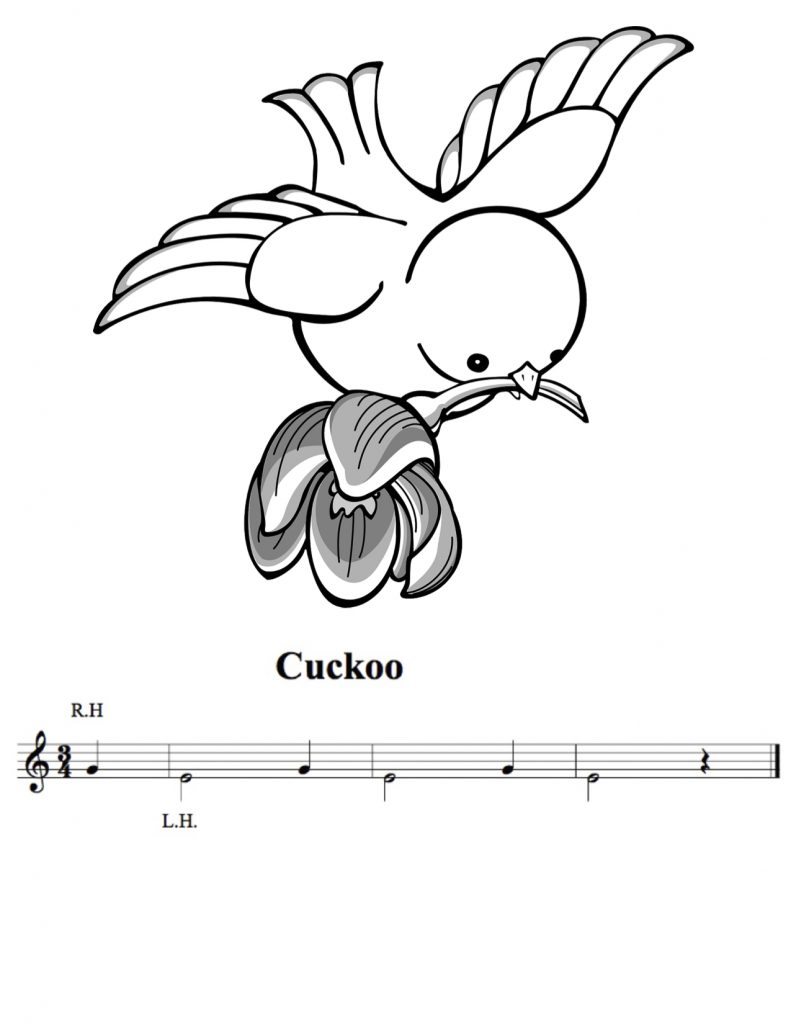
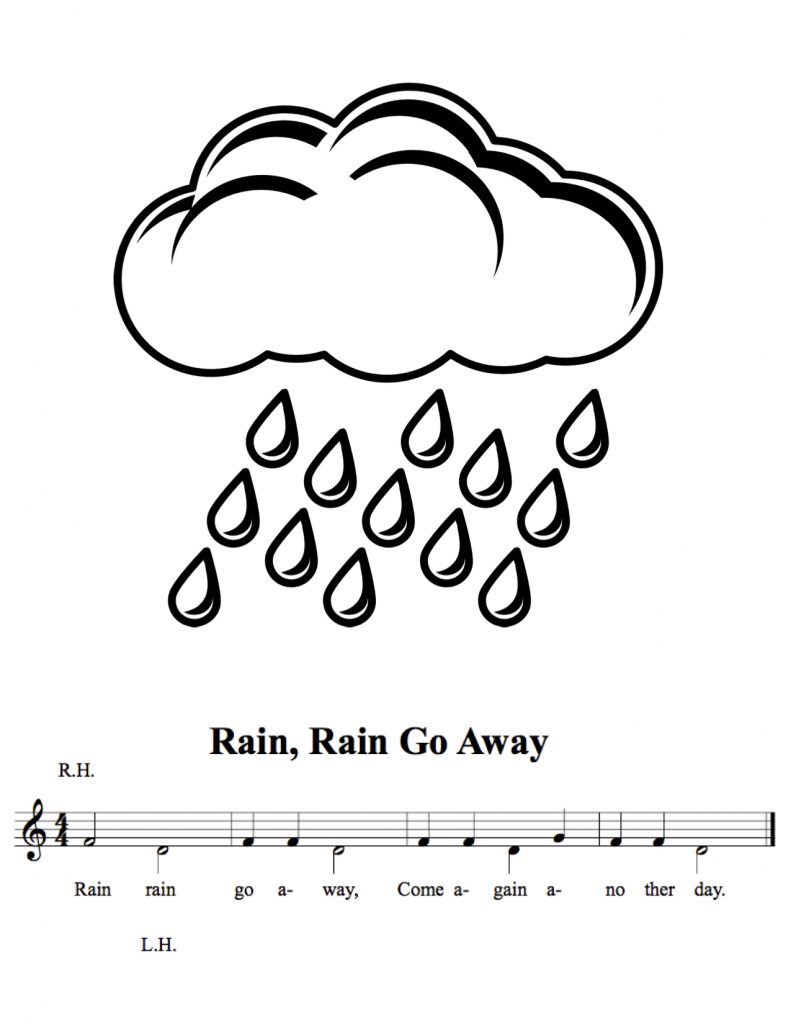
You can find a free downloadable pdf of beginner piano pieces here.
5) Ask a student to name the notes in “Rain, Rain.” Ask them to play using just one hand.
Then ask the student to start the right hand on the F, and the Left Hand on the D. Play the piece with both hands at the same time. The right hand plays the top notes, and the left hand plays the bottom notes.
Lessons 6-7.
1) Ask them to find all the notes on the piano. See if they can do it in random order.
2) Ask the student to write C, D, E, F, G, and A in random order. Possibly add writing a B as well.
3) Ask the student to play the pieces you worked on last week.
If they are doing well with them, add 1 or 2 new pieces.
At this point, I introduce reading two staffs at the same time—top staff for the right hand, bottom staff for the left hand.
Now is also an excellent time to teach the student that you need to practice one hand at a time first and then put them together.
I start with “Cat the Navigator.” The right hand part sounds a lot like “Rain, Rain.” Once they put both hands together, they notice that it is an entirely different melody.
“With the Cat” is a little more challenging. Especially the second staff, where the hands have to play the same E right after each other.
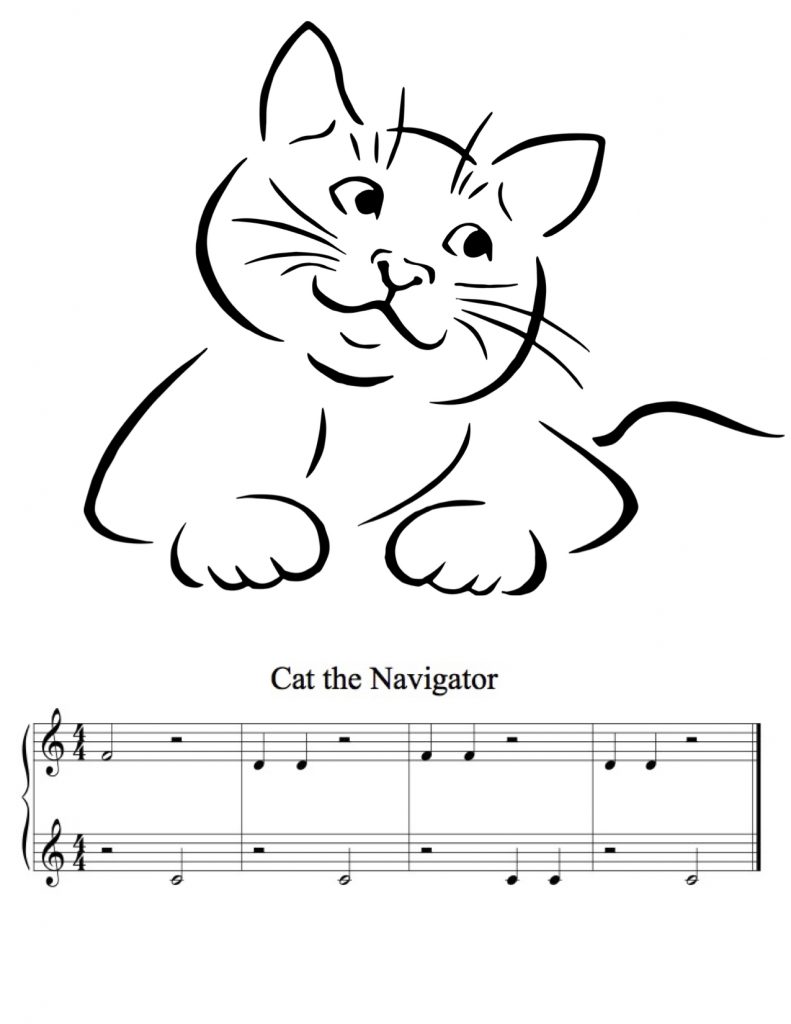
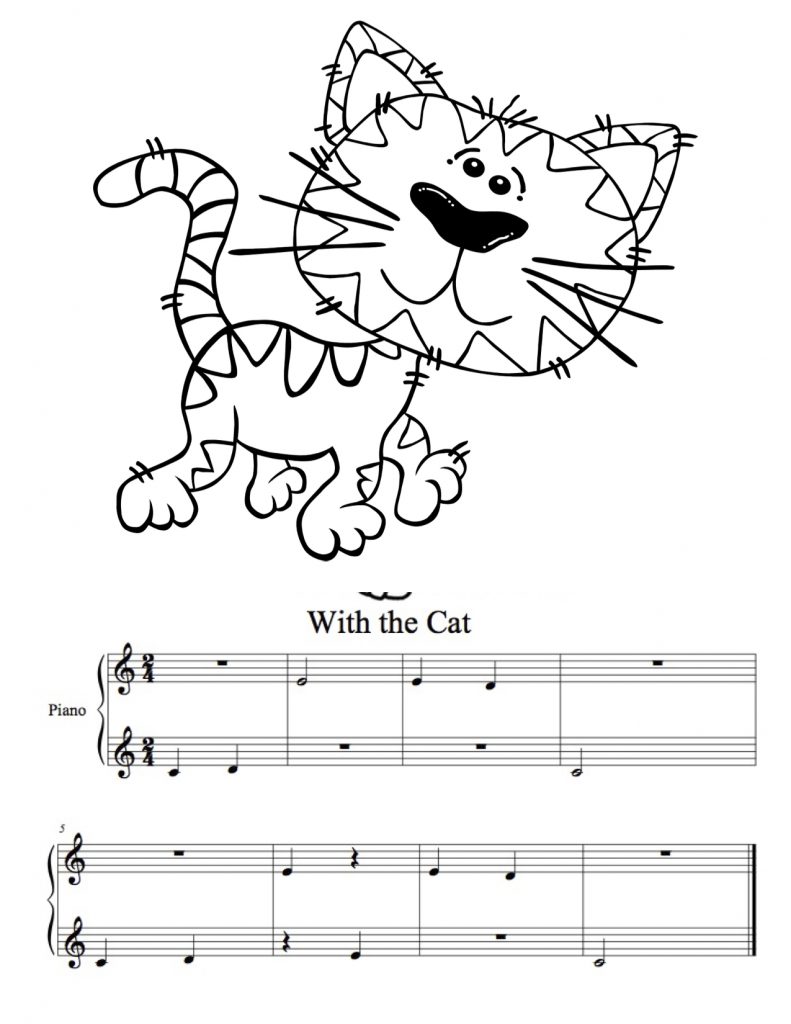
Here you can see the piano lesson plans for beginners pdf. Feel free to download it.
You can also check out my beginner piano pieces free download article.
Here is a Note Speller PDF Free Download.
If you find this information useful, please share it social media that other piano teacher can find it.
#teaching #business

Rudolf Ozolins
Rudolf Ozolins holds a DMA in piano performance from Michigan State University. He has a well-established piano studio in Detroit Metro Area. Rudolf works as an accompanist at Oakland University with Flute studios of Sharon Sparrow, Jeff Zook, and Amanda Blaikie. He actively concertizes as a chamber musician.


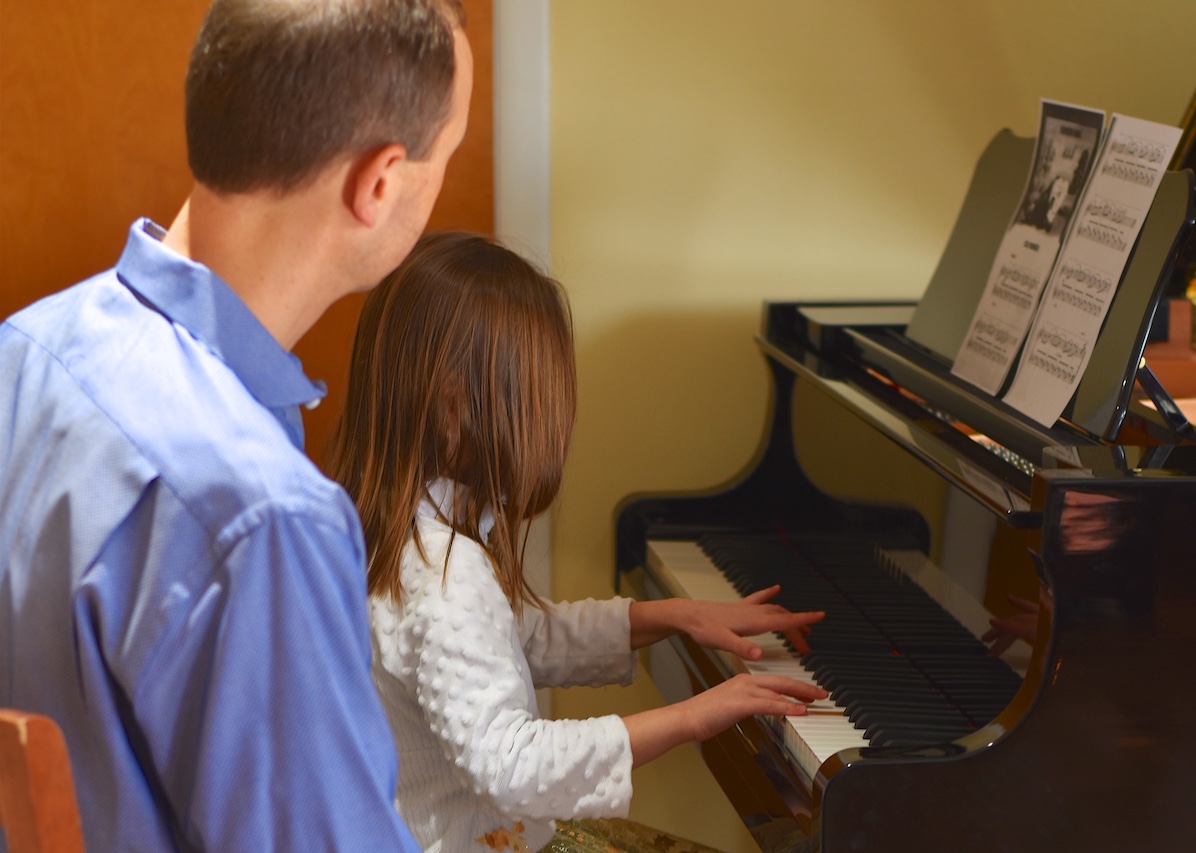
Comments are closed.